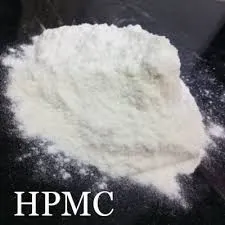
Aug . 01, 2024 05:01 Back to list
Current Market Trends and Pricing Analysis of Hydroxypropyl Methylcellulose for Various Applications
Understanding Hydroxypropyl Methylcellulose (HPMC) Prices
Hydroxypropyl Methylcellulose (HPMC) is a versatile polymer derived from cellulose, widely used in various industries, including pharmaceuticals, food, cosmetics, and construction. The pricing of HPMC is influenced by multiple factors, ranging from raw material costs to market demand and supply chain dynamics. In this article, we will explore the key elements that contribute to HPMC pricing and its implications for various sectors.
Composition and Properties of HPMC
HPMC is a non-ionic, cellulose-based polymer that is soluble in water and has unique gel-forming properties. The chemical modification of cellulose not only enhances its solubility but also improves its performance in various applications. HPMC is used as a thickener, emulsifier, and binder, making it essential in the formulation of drugs, food products, and construction materials.
Factors Influencing HPMC Prices
1. Raw Material Costs The primary raw materials for HPMC production are cellulose and various chemicals used during the modification process. Fluctuations in the prices of these raw materials due to supply constraints or geopolitical issues can significantly impact the overall cost of HPMC. For instance, if there is a scarcity of quality cellulose due to environmental changes or supply chain disruptions, prices can surge.
2. Production Process The manufacturing process of HPMC is complex and energy-intensive. This involves the controlled etherification of cellulose while maintaining specific quality standards. Variations in energy prices can affect production costs, which in turn influences HPMC pricing in the market.
3. Market Demand and Supply Demand for HPMC tends to rise with the growth of industries using this polymer. For example, the pharmaceutical industry requires high-quality HPMC for drug formulation. A surge in demand from particular sectors, especially during global health crises, can lead to price increases. Moreover, supply chain issues, such as transportation delays or manufacturing halts, can compound these challenges, leading to further price hikes.
hydroxypropyl methylcellulose price

4. Geopolitical Factors Global events, including trade policies, tariffs, and international relations, can have a profound effect on market prices. For example, if a major supplier of cellulose faces trade restrictions, the global supply of HPMC may diminish, resulting in increased prices. Additionally, economic sanctions or conflicts can disrupt production lines and shipping routes, leading to price volatility.
5. Technological Advancements Innovations in production technologies can sometimes lower manufacturing costs, thereby affecting HPMC pricing positively. Companies that adopt more efficient processes can offer competitive pricing, influencing market dynamics. Conversely, if the technological advancements require substantial capital investment, this can initially lead to increased prices.
Implications of HPMC Pricing
The price of HPMC has far-reaching implications across various industries. For manufacturers seeking to produce cost-effective products, fluctuations in HPMC prices can affect their overall production costs and profit margins. This, in turn, may lead to increased prices for end consumers, especially in the food and pharmaceutical sectors, where HPMC is a crucial component.
Moreover, consumers and businesses must stay informed about market trends to make strategic purchasing decisions. Companies might look for alternative materials or optimize formulations to mitigate the impact of HPMC price changes.
Conclusion
Hydroxypropyl Methylcellulose remains a critical component in many industrial applications, and understanding the factors that influence its pricing is essential for manufacturers and consumers alike. As the market continues to evolve, staying abreast of trends and changes in raw material costs, production methods, and market dynamics will be vital for managing costs effectively and ensuring supply chain reliability.
-
Versatile Hpmc Uses in Different Industries
NewsJun.19,2025
-
Redispersible Powder's Role in Enhancing Durability of Construction Products
NewsJun.19,2025
-
Hydroxyethyl Cellulose Applications Driving Green Industrial Processes
NewsJun.19,2025
-
Exploring Different Redispersible Polymer Powder
NewsJun.19,2025
-
Choosing the Right Mortar Bonding Agent
NewsJun.19,2025
-
Applications and Significance of China Hpmc in Modern Industries
NewsJun.19,2025







